You are here
New Releases

Girlhood not mothers
When a girl becomes pregnant, her present and future change radically, and rarely for the better. Pregnancy before a girl is physically, developmentally and socially ready jeopardizes her right to a safe, successful transition into adulthood. This publication presents strategic thinking and reviews the best available evidence on effective strategies and interventions to empower girls and reduce their vulnerability to adolescent pregnancy. Drawing from the evaluated evidence, it provides guidance on how to implement effective programmes that operate at multiple levels and with multiple stakeholders, including and most importantly, with the adolescent girl.
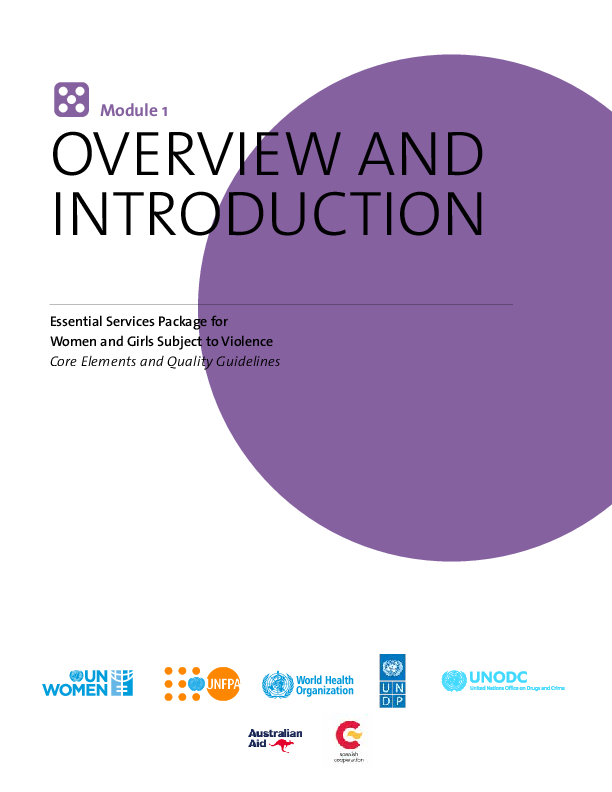
Essential Services Package for Women and Girls Subject to Violence
The United Nations Joint Global Programme on Essential Services for Women and Girls Subject to Violence (the Joint Global Programme) was officially launched by UNFPA and UN Women in December 2013, with support and funding from the Government of Spain and the Australian Government. The participating UN agencies include: UNFPA, UN WOMEN, WHO, UNDP and UNODC.
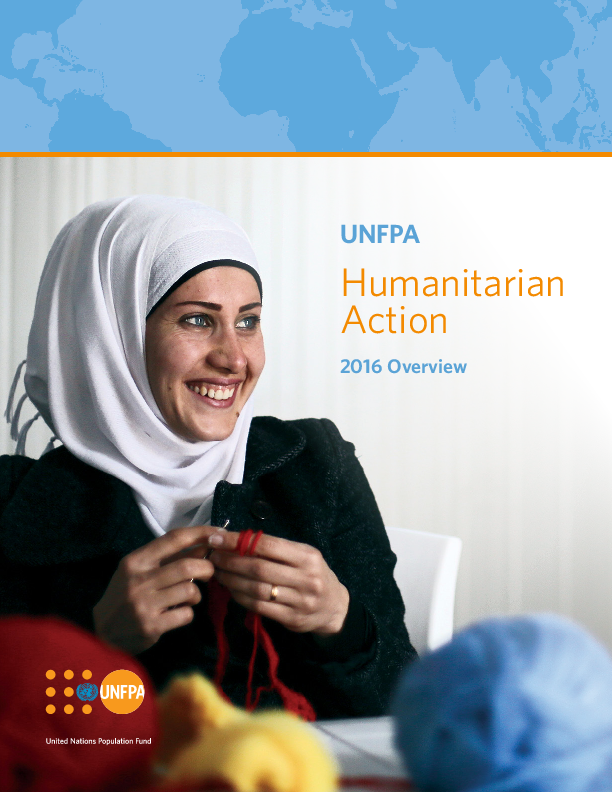
UNFPA Humanitarian Action Overview
Today more than 75 per cent of people affected by humanitarian crises are women and children. And adolescents aged 10-19 years constitute a significant proportion of the population in many conflict and post-conflict settings.
In response to today’s humanitarian challenges, UNFPA continues to provide life-saving services to prevent and respond to gender-based violence and provide information, services and supplies for sexual and reproductive health.
Our focus goes beyond meeting immediate needs to reducing risk, building peace, strengthening resilience and supporting long-term development.
By investing in women, girls and young people we will accelerate progress towards the achievement of the Sustainable Development Goals, strengthen prospects for peace and security, and transform humanitarian action.
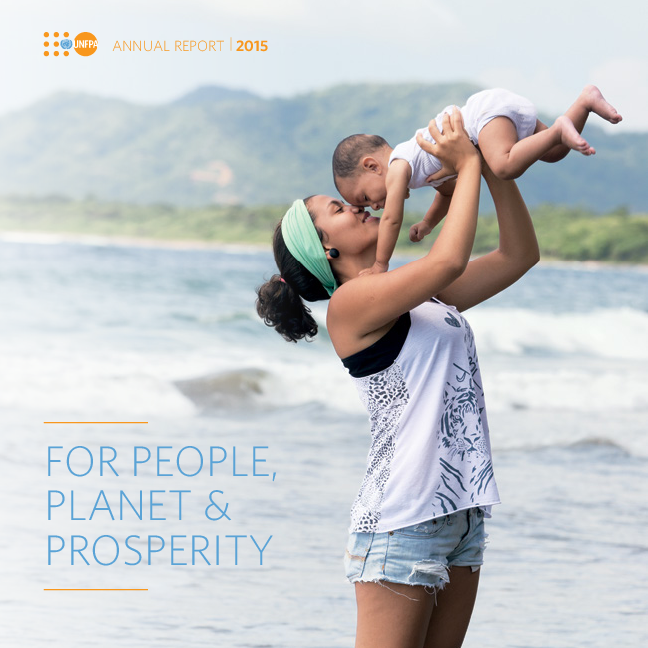
UNFPA Annual Report 2015
PEOPLE AT THE CENTRE OF SUSTAINABLE DEVELOPMENT
The new development agenda and evolving funding dynamic call for new thinking, new partnerships and new ways of doing business. While our current financial situation, at least for now, may not allow us to do more, we can endeavour to do better—and we will.
In 2015, we sought ways to secure more predictable and stable funding while continuing efforts towards innovation, both in our operations and programme delivery, as a means of achieving greater efficiency, greater results and greater impact.
UNFPA will continue to place people, their human rights, well-being and dignity, at the centre of our sustainable development efforts. Let us seize the opportunities offered by the new development agenda to ensure that every pregnancy is wanted, every birth is safe, and every young person’s potential is fulfilled—for the sake of people, planet and prosperity for all.
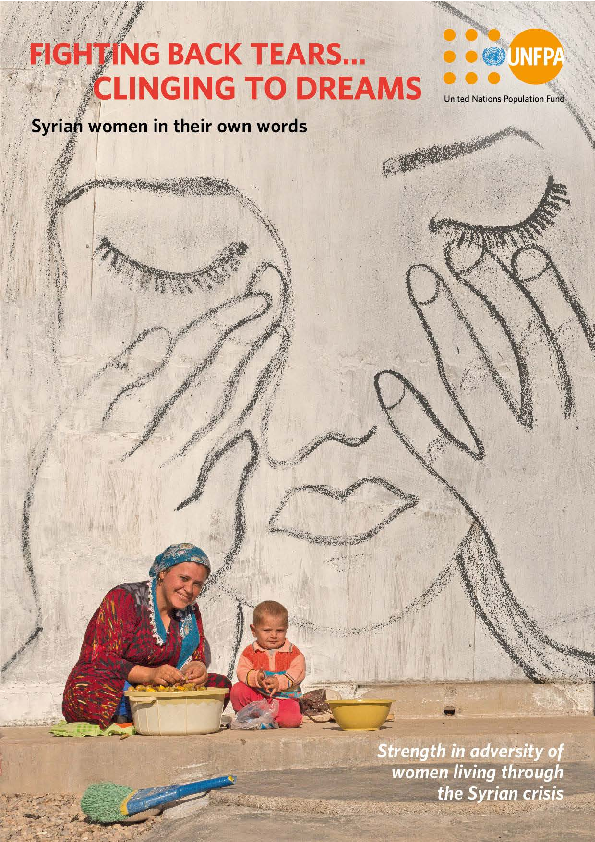
FIGHTING BACK TEARS… CLINGING TO DREAMS
In Fighting Back Tears ... Clinging to Dreams. Syrian Women in Their Own Words, a different picture of Syria emerges than the one we normally see. Yes, there is great suffering and grief. But there are also heartening stories of devotion, initiative, togetherness and even joy.
This publication aims to amplify the voices of Syrian women and add new texture to the portrait of their lives inside Syria and in neighbouring countries.

Adolescent Boys and Young Men
Achieving gender equality must, and has, involved efforts to understand the vulnerabilities and risks that adolescent girls and young women face every day – but how much do we know about the realities of adolescent boys and young men? This report takes a deeper look at the daily lives of adolescent boys and young men around the world and at how they can join the movement towards improved health and gender equality.
Exploring global research, the report reveals boys’ and young men’s specific risks and realities in relation to health in general, sexual and reproductive health in particular, sexuality, media violence, sexual exploitation and other vulnerabilities. It analyzes the implications of these risks and realities not only for boys, but also on the lives of women and girls.
Adolescence is a key period where individuals of all gender identities form attitudes, opinions and beliefs – about themselves, about their sexuality and about their place in the world. It is a period when ideas about equality can become ingrained. The study emphasizes that a holistic approach to advancing gender equality and sexual and reproductive health must include both adolescent girls and boys. It highlights the need to engage adolescent boys and young men as allies to achieve gender equality and as supporters of women’s empowerment, as well as the importance of addressing the specific health and social development needs of boys themselves.
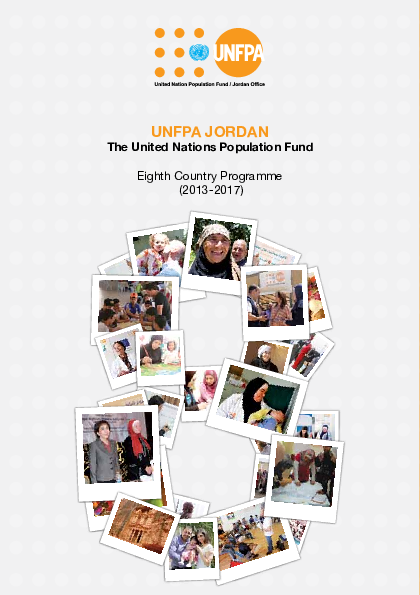
The Eighth Country Programme Booklet 2013-2017
“UNFPA, the United Nations Population Fund, delivers a world where every pregnancy is wanted, every birth is safe, every young person’s potential is fulfilled
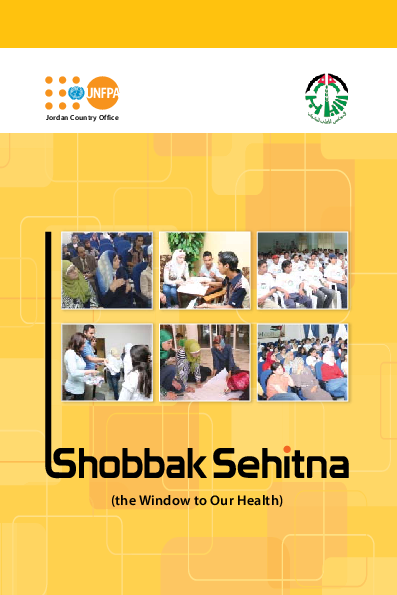
Shubak Sehtna Brochure
More than 1,700,000 Jordanians are between the ages of 10 and 24 making up more than 33% of our population. Working with and for youth in Jordan has been a priority among so many national and international partners includi ,ing UNFPA. Today, given the demographic transition the country is witnessing investing in young men and women, their health and well-being becomes even more important, to ensure that this large and important segment of the Jordan nian society is empowered to contribute fully and responsibly to the country’s .
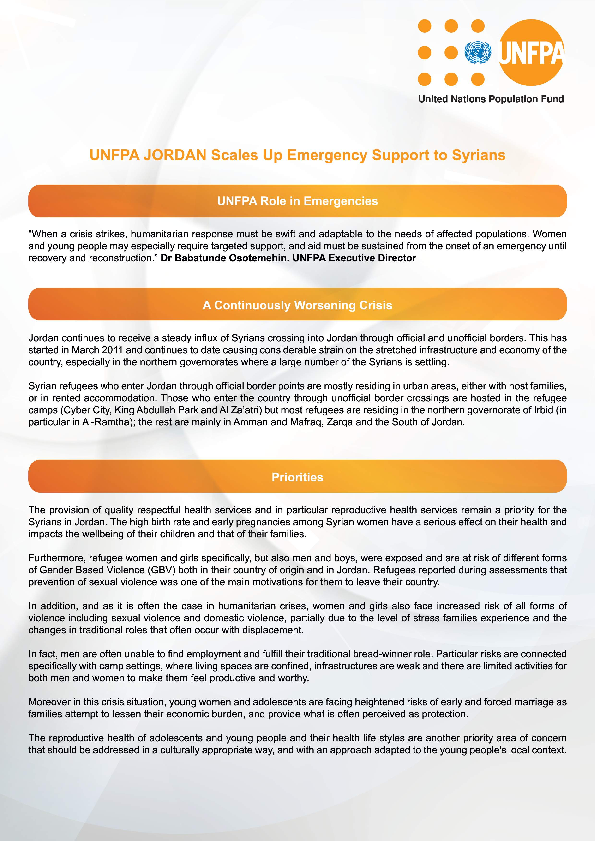
Resident UN agencies working in Jordan
Jordan continues to receive a steady influx of Syrians crossing into Jordon through official and unofficial borders.this has started in march 2011 and continues to date causing considerable strain on the strectched infrastructure and economy of the country,especially in the nothern governorates where a large number of the Syrians is setting.
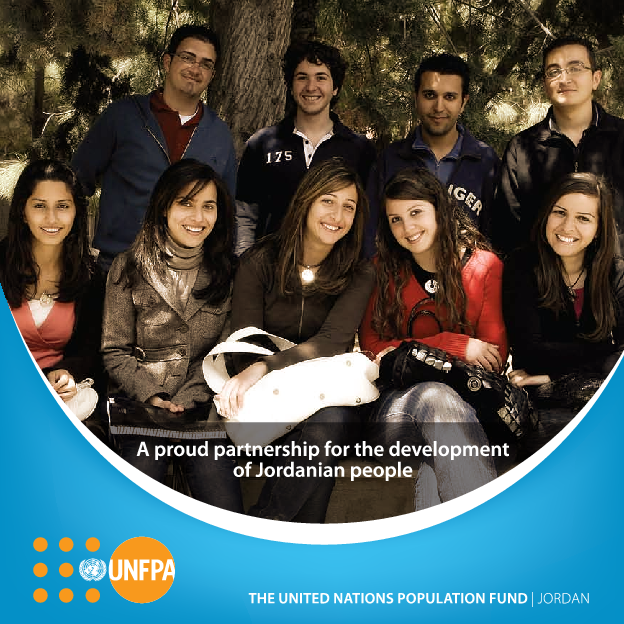
UNFPA booklet
UNFPA seeks to improve the lives and expand the choices of individuals and couples. Over time, the reproductive choices they make, multiplied across communities and countries, alter population structures and trends.